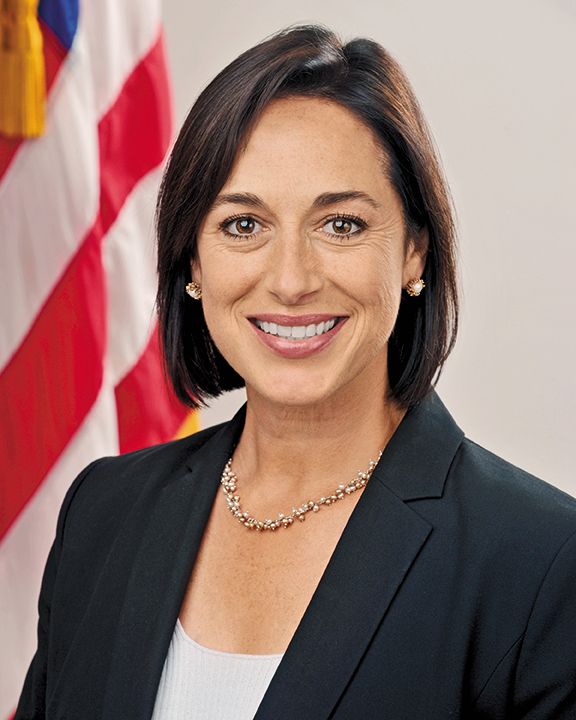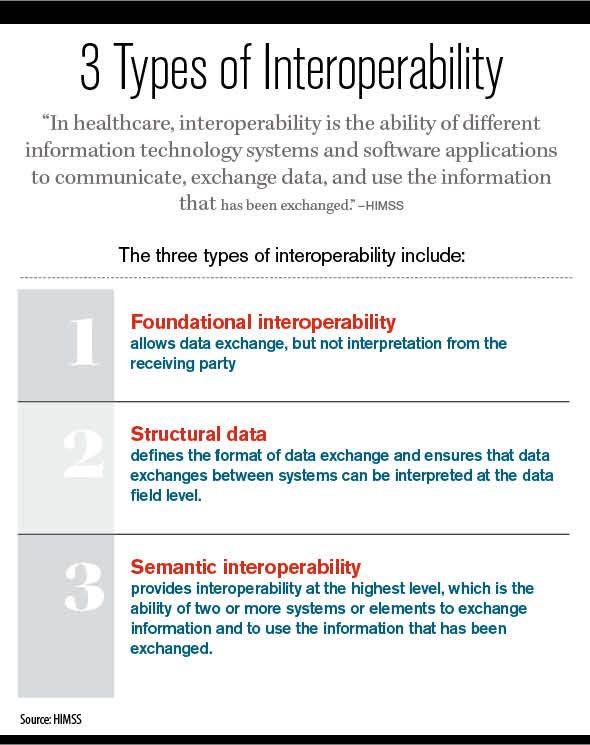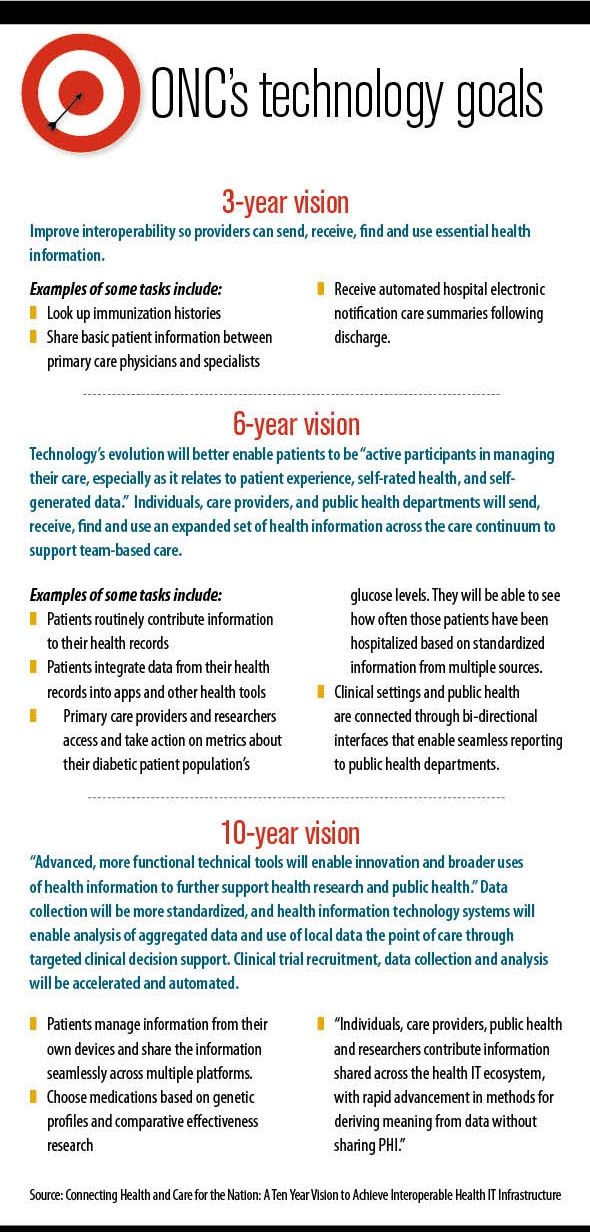Article
ONC’s plan to solve the EHR interoperability puzzle
Medical Economics exclusive interview with Karen B. DeSalvo, MD, MPH, MSc, the national coordinator for Health Information Technology of the U.S. Department of Health and Human Services.

Healthcare is a decade away from a national, interoperable health information technology platform. And while infrastructure expansion and improvements will advance at a blistering pace over the next three years, more work is clearly needed, says Karen B. DeSalvo, MD, MPH, MSc, the national coordinator for Health Information Technology of the U.S. Department of Health and Human Services (HHS) in an exclusive interview with Medical Economics.
In fact, despite dismal numbers of physicians and institutions attesting to the government’s meaningful use stage 2 of the electronic health record (EHR) incentive program so far in 2014, DeSalvo says the slow start isn’t indicative of a stalled program, rather one that is in a fluid state of development and policymaking.
In doling out more than $24.6 billion in EHR incentives from 2011 to June 2014 to about 408,000 healthcare providers, the government is in this for the long haul.
See our list of the Top 50 EHRs and our usability scorecards.
The payoff, DeSalvo says, will be an interconnected, digital healthcare platform built to share and learn to improve healthcare delivery and, ultimately, better protect public health. An interoperable technological infrastructure will cut duplication of testing, streamline the gathering and dissemination of medical information all contributing to the inefficiencies of a U.S. healthcare system fragmented by size and specialty.
“It is very important for our country to digitize one-fifth of this economy,” DeSalvo says, “and have a much better way to address the [needs of the] population and public health at the same time.”

Next: The vision for the future
The vision
The government’s push to digitize health records is about public health. Digital medical records will help in gathering data for comparative effectiveness research; they will help public health officials better respond to outbreaks or other health emergencies, and they will give physicians analytical and clinical tools to better assess their patient populations to prevent disease, intervene before a major health event, or prevent unnecessary hospitalizations.
And its success and failure relies on IT systems that have the ability to securely exchange healthcare data. That’s why the concept of interoperability is so crucial and so heavily tied to the government’s meaningful use 2 EHR incentive program and meaningful use 3.
READ: Technology opens new avenues for patient communication
Ultimately, ONC says, a fully functioning interoperable healthcare system would make “the right data available to the right people, at the right time across products and organizations in a way that can be relied upon and meaningfully used by recipients,” ONC says in a white paper detailing “A 10-Year Vision to Achieve an Interoperable Health IT infrastructure.” So, what is interoperability? The Healthcare Information and Management Systems Society (HIMSS) describes it this way:
“In healthcare, interoperability is the ability of different information technology systems and software applications to communicate, exchange data, and use the information that has been exchanged.” Data could be shared by clinicians, labs, hospitals, pharmacies and patients regardless of the application or vendor.
“Interoperability means the ability of health information systems to work together within and across organizational boundaries in order to advance the health status of, and the effective delivery of healthcare for, individuals and communities.”
In practice, an interoperable system would allow physicians to easily transfer or view patient health information from other physicians or healthcare organizations involved in the care of their patients, receive hospital notifications regarding their patients, or review recommendations from a nurse practitioner in a retail clinic if treatment was initiated, and much more.
“Health is more than getting people to a doctor,” DeSalvo says. “It’s about where they live, learn, work and play. It’s about the choices our patients make when they leave our offices.” Technology has the ability, for the first time, to free providers from the confines of the examination room and help guide health decisions in ways physicians would think unimaginable just a decade ago.
READ: 7 must-see remote patient monitoring devices
Remote monitoring and telehealth are just two examples that offer promising and novel approaches to care delivery, DeSalvo says, and it’s the technological innovation that will make it a reality.
British writer Arthur C. Clarke was credited with three laws of prediction. In this case, the third law applies, DeSalvo says: Any sufficiently advanced technology is indistinguishable from magic.

Next: ONC's technology goals

Next: The reality
The reality
In 2014, HIT hasn’t been able to wave its wand to make interoperability appear for most office-based practices.
While there have been successes related to tasks like e-prescribing, development of healthcare information exchanges, and adoption and use by larger healthcare systems, DeSalvo says, officed-based practices are feeling the growing pains associated with time to input data, workflows, costs, patient engagement, or simply do not yet see the benefits to patient care.
Many primary care physicians are frustrated, according to recent Medical Economics surveys about the current state of EHR technology. Physicians are pressed for time and money, and this new technology seems to be placing even more demands on both.
While health information technology is in its adolescence, DeSalvo says, the advancement of cell phone technology offers a glimpse of the future.
In the early days, cell phones were cumbersome, the batteries died far too quickly, and coverage was limited in most cases, DeSalvo says. The introduction and adoption of smart phones not only happened quickly, it was transformative, and represents the kind of magic technology can deliver.
“My expectation and hope for the e-health environment is that we let innovation happen in such a way that we are making the care experience as magical as it should be, so the joy of medicine comes out and electronic health records are part of a larger portfolio of support for electronic health information, [and so] that doctors and other providers really focus on patients and health as opposed to technology,” she says.
“My goal is that we set a path together and a road map so that everyone can be brought along,” she says. “At the end of 10 years, this country will have built an interconnected data and communications system. In the next three years, we have to get the basic infrastructure, the fundamentals in place.
According to DeSalvo, while that work is happening, technological advances are posing many other questions related to portability, contracting, care coordination, physician payments, and patient-generated health data. Ultimately, “technology is pushing us to consider that this is also coming faster than we thought.”
Technology’s great evolution will be used to help build tools to enhance the relationship between patients and physicians, to improve access to care and their knowledge about care decisions, DeSalvo says.
But it will take time.





